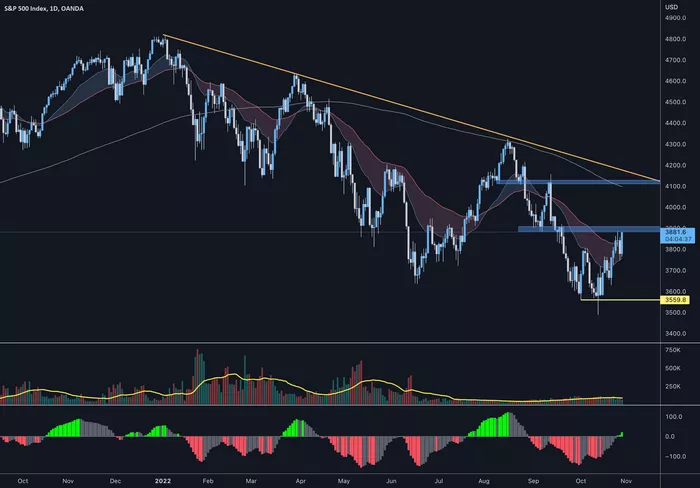Investing in stocks can offer great returns, but it also comes with risks. Stock prices can be volatile, influenced by various factors such as economic conditions, geopolitical events, company performance, and market sentiment. For investors looking to protect their investments from these unpredictable fluctuations, hedging is an essential strategy. Hedging allows investors to reduce potential losses by using financial instruments that offset the risks associated with stock market movements.
In this article, we will explore the concept of stock hedging, why it is important, and the various strategies investors can use to hedge their stock portfolios effectively. We will also discuss the risks and benefits of hedging, providing you with a comprehensive guide to managing stock market risk.
What is Hedging?
Hedging is a risk management strategy used by investors to offset potential losses in their investments. In the context of stocks, hedging involves using financial instruments or strategies that protect against price movements that could negatively affect the value of the stock portfolio. While it does not eliminate risk entirely, hedging aims to reduce the impact of adverse market movements.
The goal of hedging is not to make a profit directly from the hedge itself, but rather to minimize the downside risk associated with the underlying stock positions. It’s essentially an insurance policy for your investments.
How Does Hedging Work?
Hedging works by taking an offsetting position in a related asset or derivative. For example, if you own a stock that you believe might decline in value, you can hedge against that risk by using an instrument like options or futures contracts to protect your position. If the stock falls in value, the hedge gains in value, helping to offset the loss from the stock.
The idea is to create a situation where losses in one area are offset by gains in another, balancing out the overall portfolio risk.
Why Should You Hedge Stocks?
Hedging stocks is an important risk management tool, especially for investors with significant exposure to the equity markets. While the potential for high returns is attractive, the risks involved—such as market crashes, economic downturns, or poor company performance—can result in substantial losses. Here are some reasons why hedging stocks is beneficial:
1. Protection from Market Volatility
Stock markets can be volatile, with prices moving up and down based on various factors, including news events, earnings reports, and changes in investor sentiment. Volatility can be unpredictable, and while it presents opportunities for gains, it also exposes investors to significant risks. Hedging helps protect against these unpredictable price movements.
2. Risk Reduction
Hedging allows investors to reduce the risk of large losses in their stock portfolio. By using hedging strategies, investors can limit the potential negative impact of adverse market conditions. It provides a way to manage the downside risk while still participating in the upside potential of the stock market.
3. Increased Portfolio Stability
For investors with a diversified portfolio, hedging can add an extra layer of stability. By protecting against large losses, hedging ensures that the portfolio’s value does not experience dramatic fluctuations. This can be particularly important for long-term investors who wish to avoid significant declines in portfolio value.
4. Preserving Capital
Preserving capital is a top priority for many investors, especially those approaching retirement or with limited risk tolerance. Hedging can help protect capital by reducing the impact of market declines, ensuring that investments are not exposed to significant losses.
Common Hedging Strategies for Stocks
There are several methods that investors can use to hedge their stock positions. These strategies vary in complexity and cost, and each has its advantages and disadvantages. Below are some of the most commonly used strategies for hedging stocks.
1. Using Put Options
One of the most popular ways to hedge stocks is through the use of put options. A put option is a contract that gives the holder the right (but not the obligation) to sell a stock at a predetermined price (strike price) before a certain expiration date. Investors can buy put options to protect against a decline in the price of the stock they own.
For example, if you own 100 shares of a stock currently trading at $50 per share, and you are concerned that the stock might decline in value, you can purchase a put option with a strike price of $45. If the stock falls to $40, the value of the put option will increase, offsetting the loss from the stock.
Put options are a popular and straightforward way to hedge because they offer limited downside risk (the cost of the option) while providing significant protection if the stock price declines.
2. Using Call Options for Covered Calls
Another option for hedging stocks is the covered call strategy. This involves selling call options against stocks you already own. By doing so, you collect the premium from the sale of the call option, which provides some income and helps reduce the overall cost basis of the stock. In exchange for this premium, you are agreeing to sell the stock at the strike price if the option is exercised.
This strategy works well in a neutral or slightly bullish market, as it allows investors to generate income from their stock positions while still participating in some of the stock’s upside. However, the potential for profit is capped if the stock price rises significantly above the strike price.
Covered calls are useful in a sideways or moderately bullish market, but they are less effective in highly volatile markets or when expecting substantial stock price movements.
3. Using Futures Contracts
Futures contracts are another way to hedge stock positions. A futures contract is an agreement to buy or sell a specific asset at a predetermined price on a future date. Futures contracts are typically used for hedging larger portfolios, as they allow investors to take a position in a broad market index, such as the S&P 500, to offset the risk of declines in their stock holdings.
For example, if you own a portfolio of stocks that closely tracks the S&P 500 index and expect a market downturn, you can sell S&P 500 futures contracts. If the market falls, the futures contracts will increase in value, helping to offset the losses in the stock portfolio.
Futures contracts are more complex and require a good understanding of how they work, as well as margin requirements. They are typically used by institutional investors or more experienced traders.
4. Diversification Across Asset Classes
While diversification itself is not a direct hedging strategy, it can serve as a hedge against stock market risk. By spreading investments across different asset classes, such as bonds, commodities, and real estate, investors can reduce their exposure to the stock market’s volatility.
For example, during periods of stock market declines, bonds or gold may perform better, offering a cushion against stock losses. Diversification helps to smooth out returns by reducing the concentration of risk in any one asset class.
5. Inverse Exchange-Traded Funds (ETFs)
Inverse ETFs are designed to move in the opposite direction of the underlying index or asset they track. These ETFs are often used by investors to hedge against stock market declines. For example, an inverse ETF that tracks the S&P 500 index will rise in value if the S&P 500 falls.
Inverse ETFs can be a cost-effective way to hedge a stock portfolio because they do not require the purchase of options or futures contracts. However, they come with risks and are generally more suitable for short-term hedging, as their performance can be volatile.
6. Hedging with Bonds
Another way to hedge stocks is by allocating a portion of your portfolio to bonds. Bonds are generally considered less risky than stocks, and they often provide a steady stream of income. When stock markets decline, bond prices may rise or remain stable, helping to offset the losses in your stock portfolio.
This strategy works best in environments where interest rates are stable or declining. However, it may be less effective if interest rates rise, as bond prices typically fall when rates increase.
7. Using Volatility Index (VIX) Options
The Volatility Index (VIX), also known as the “fear gauge,” measures market expectations of future volatility. It tends to rise when markets are expected to become more volatile, such as during periods of market uncertainty or economic crises. Investors can use VIX options or futures to hedge against market volatility.
By purchasing VIX options, investors can profit from rising volatility, which often correlates with stock market declines. This can help offset the losses in their stock portfolio. However, VIX options and futures are complex instruments and are typically used by more experienced traders.
Risks and Costs of Hedging
While hedging can reduce risk, it also involves costs and potential risks that investors must consider. Some of the challenges of hedging include:
1. Cost of Hedging
Hedging strategies often involve the purchase of options, futures, or other financial instruments, all of which come with associated costs. For example, buying a put option requires paying a premium, which can erode returns if the stock does not decline in value. Similarly, using futures contracts often involves margin requirements, which can result in additional costs.
2. Limited Profit Potential
Some hedging strategies, such as covered calls, limit the upside potential of a stock position. If the stock price rises significantly, the profits are capped because the investor may be forced to sell the stock at the strike price.
3. Complexity of Execution
Some hedging strategies, particularly those involving options and futures, can be complex and difficult for inexperienced investors to execute effectively. Misusing these instruments can result in significant losses or missed opportunities.
4. Overhedging
Overhedging occurs when an investor uses too many hedging strategies or makes the hedge too large in relation to their stock holdings. This can result in excessive costs and reduced potential returns.
Conclusion
Hedging stocks is an essential strategy for investors looking to protect their portfolios from market volatility and minimize downside risk. By using various financial instruments such as options, futures contracts, or diversification, investors can reduce the impact of market declines on their stock holdings.
While hedging offers significant benefits, it also involves costs, complexities, and risks that must be carefully considered. Investors should assess their risk tolerance, investment objectives, and financial knowledge before employing hedging strategies.
With the right approach, hedging can be an effective tool for managing stock market risk and achieving more stable and predictable investment returns.
Related topics:



























